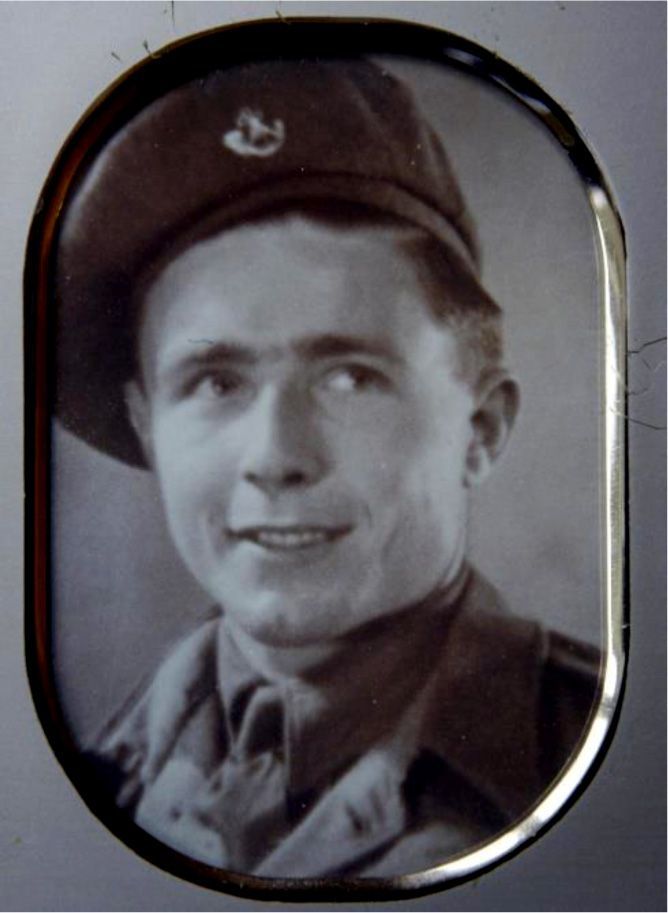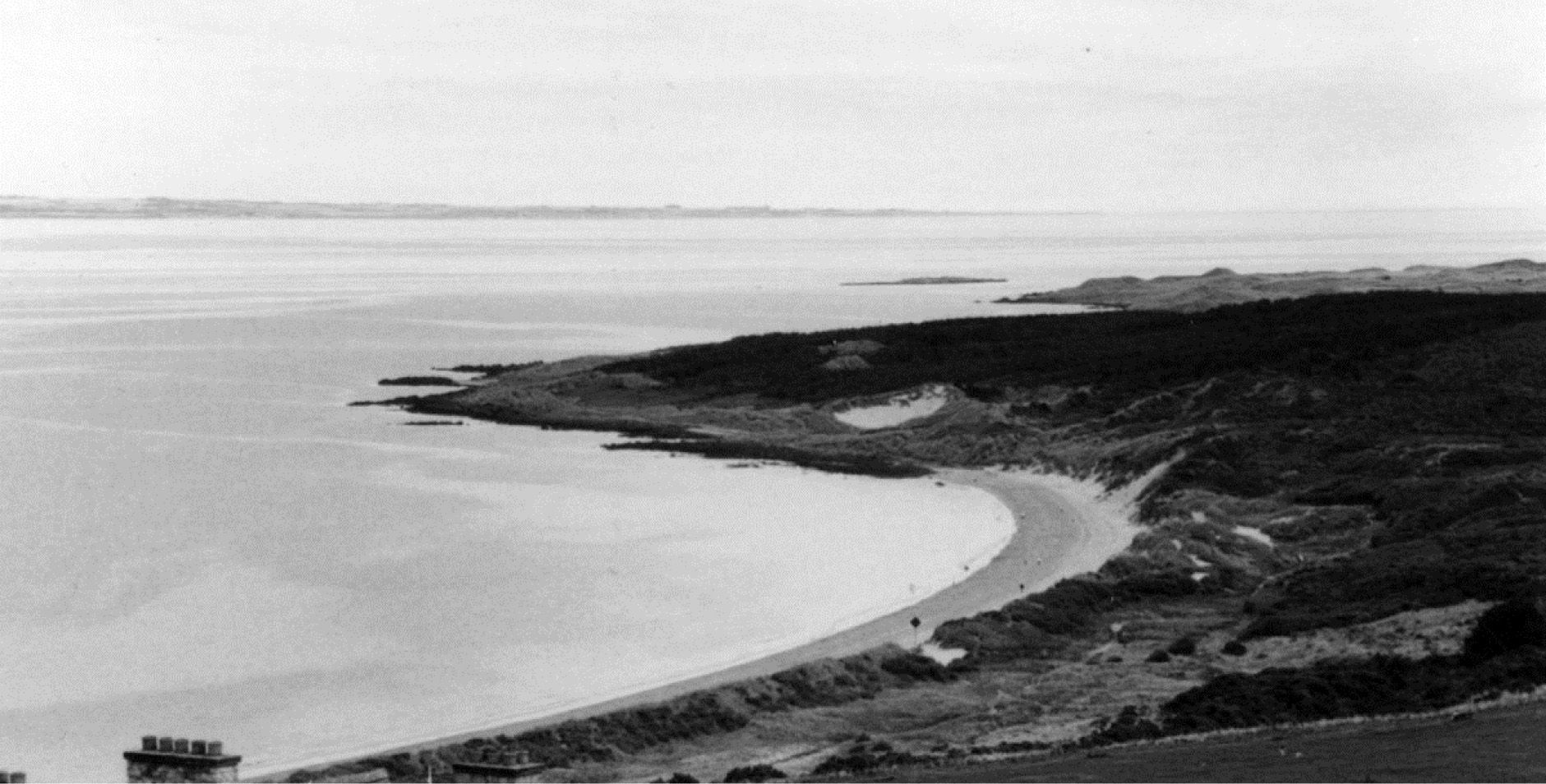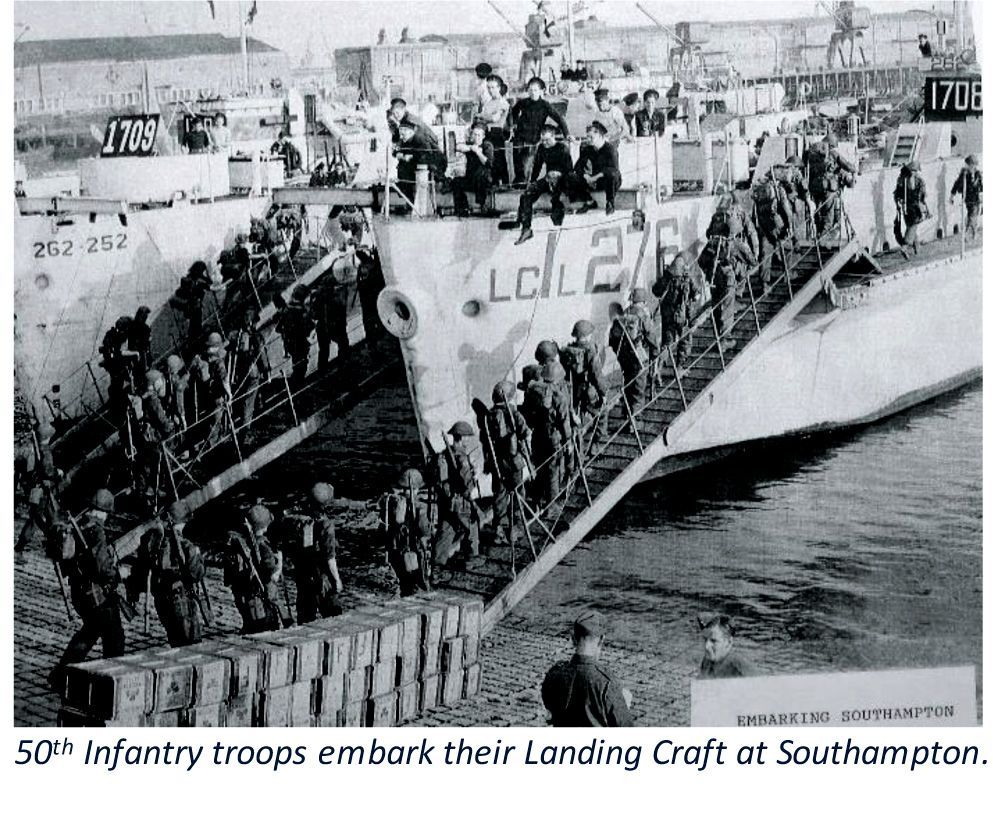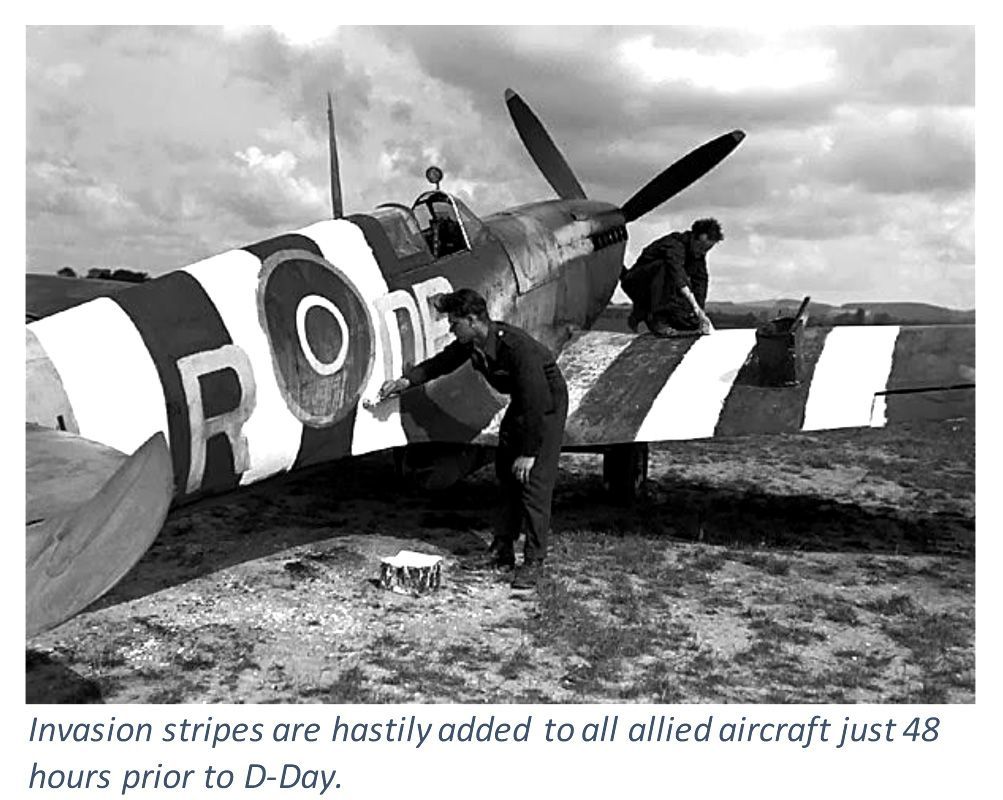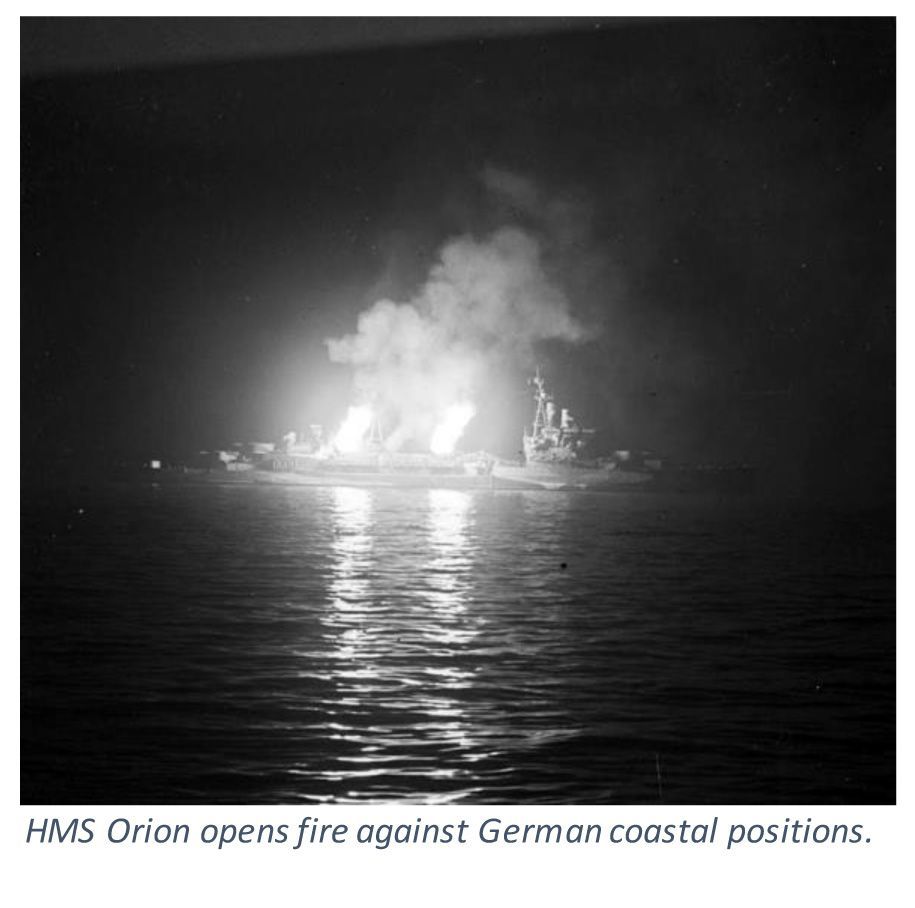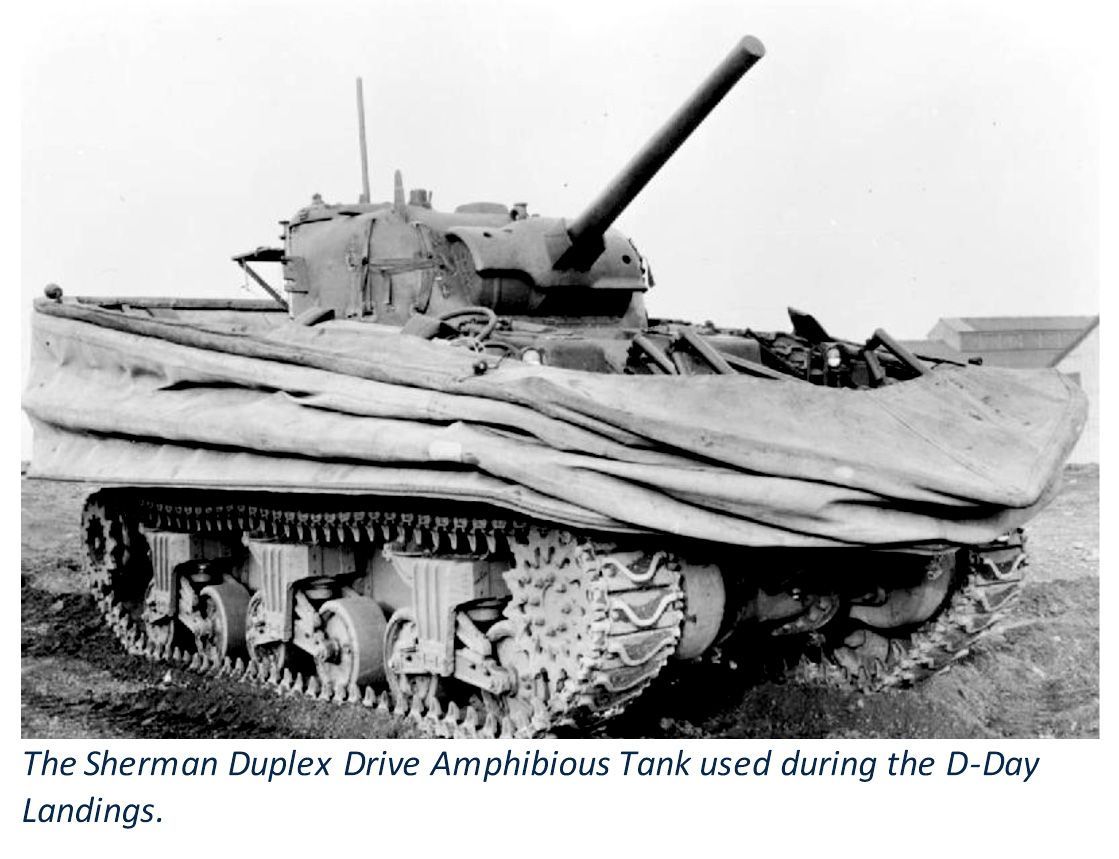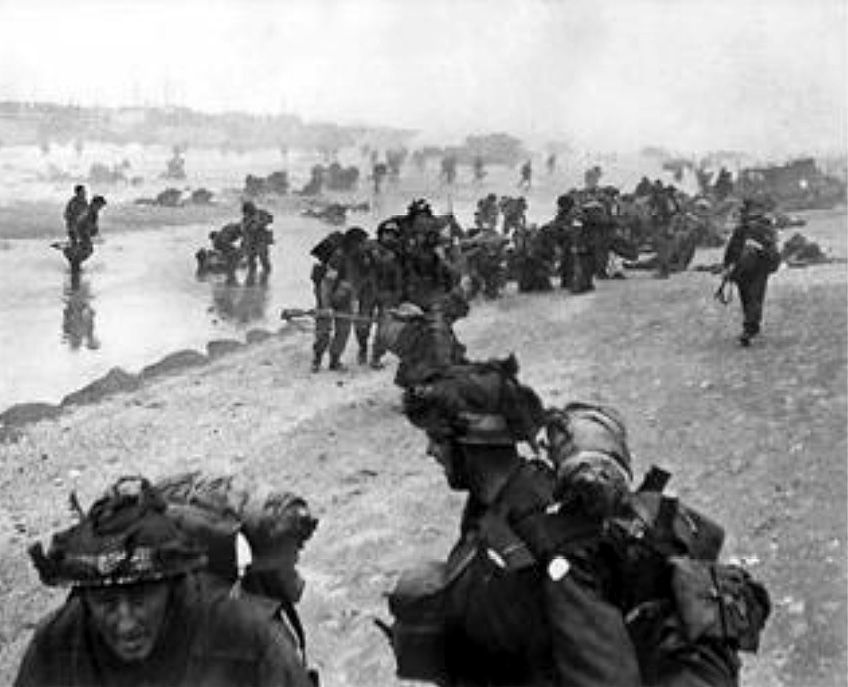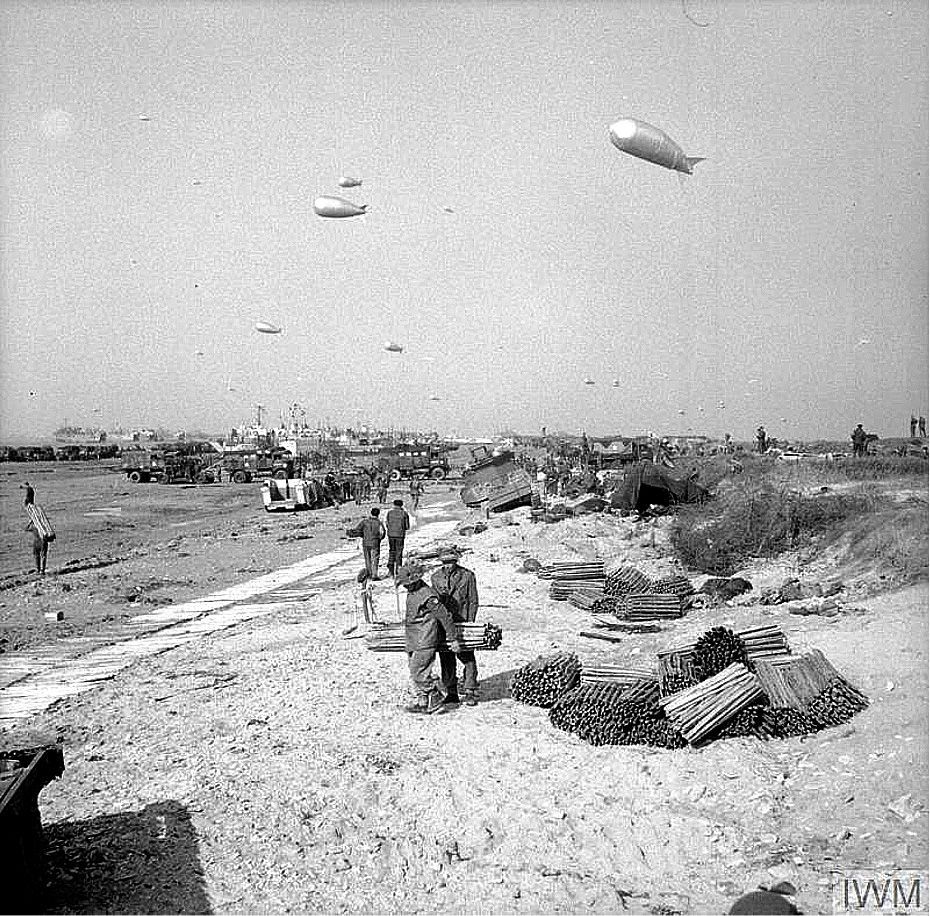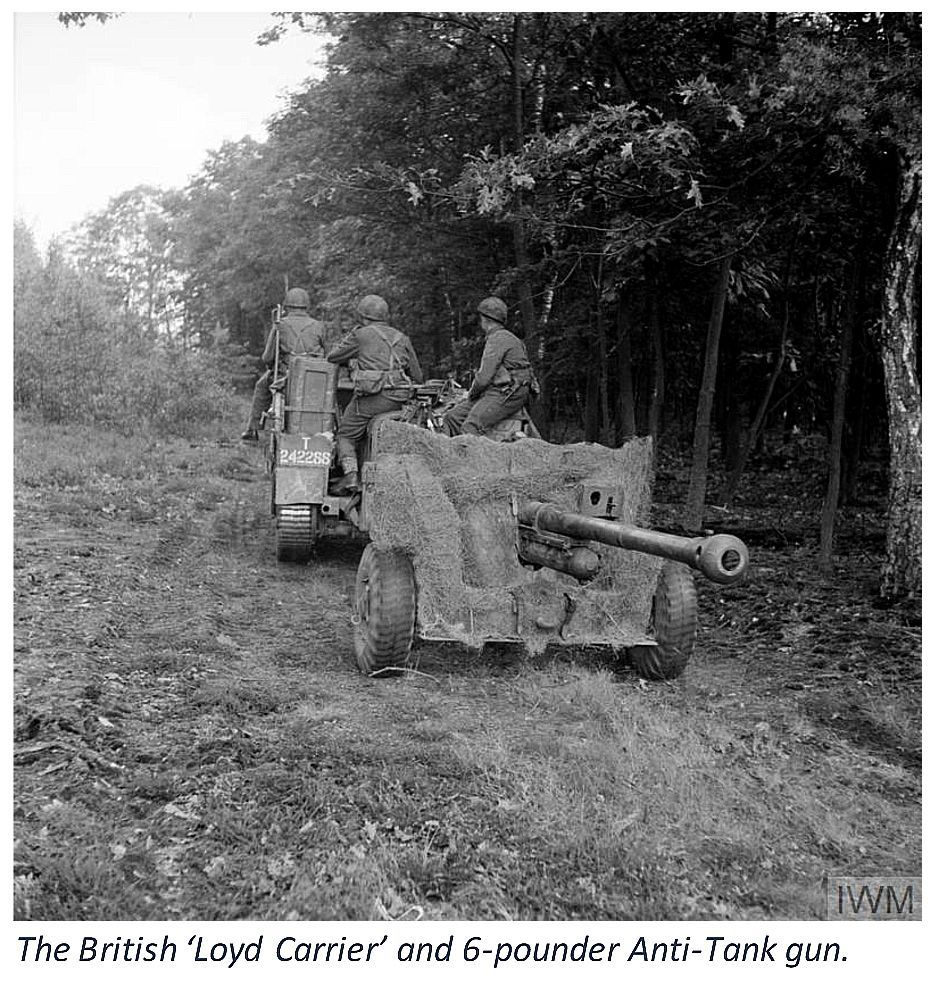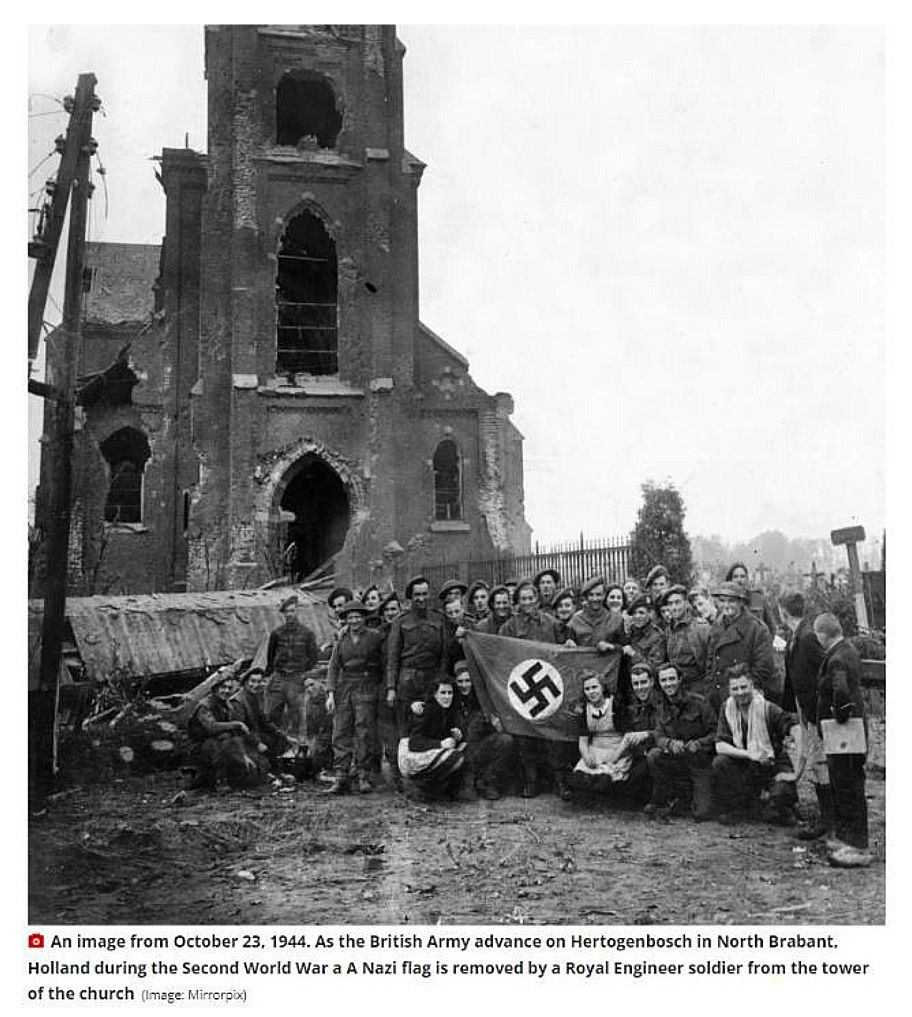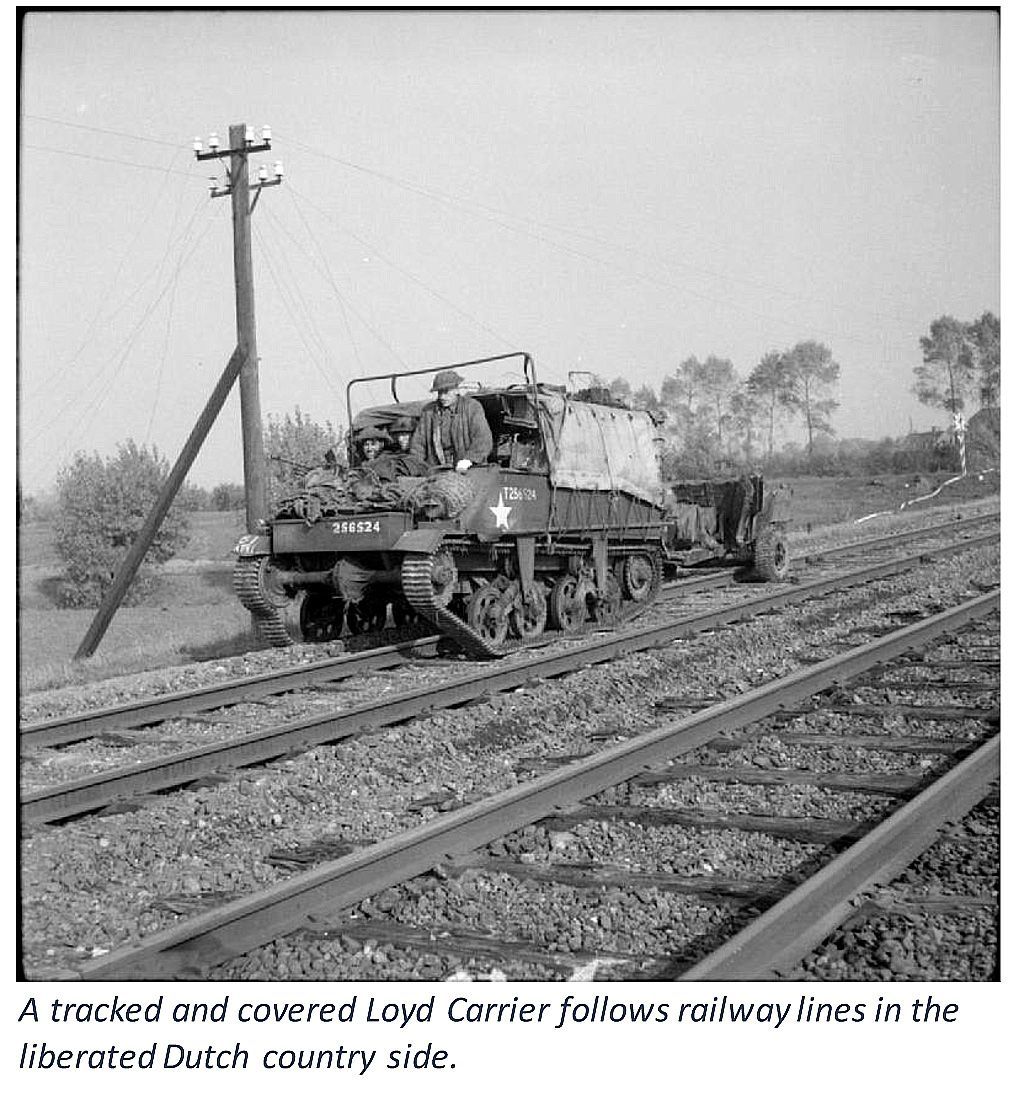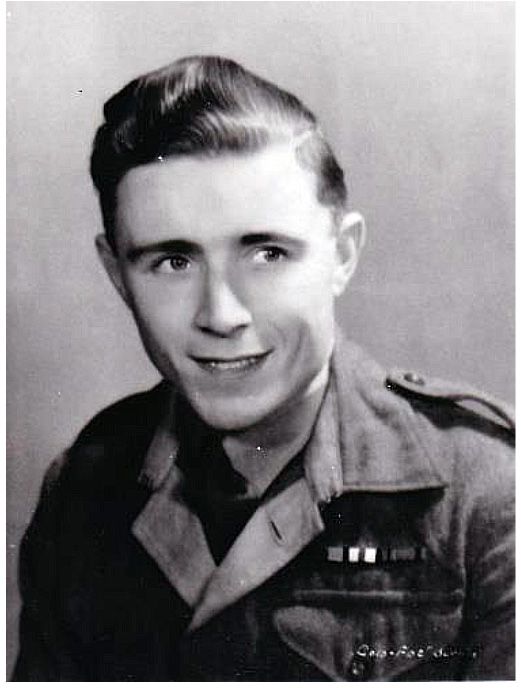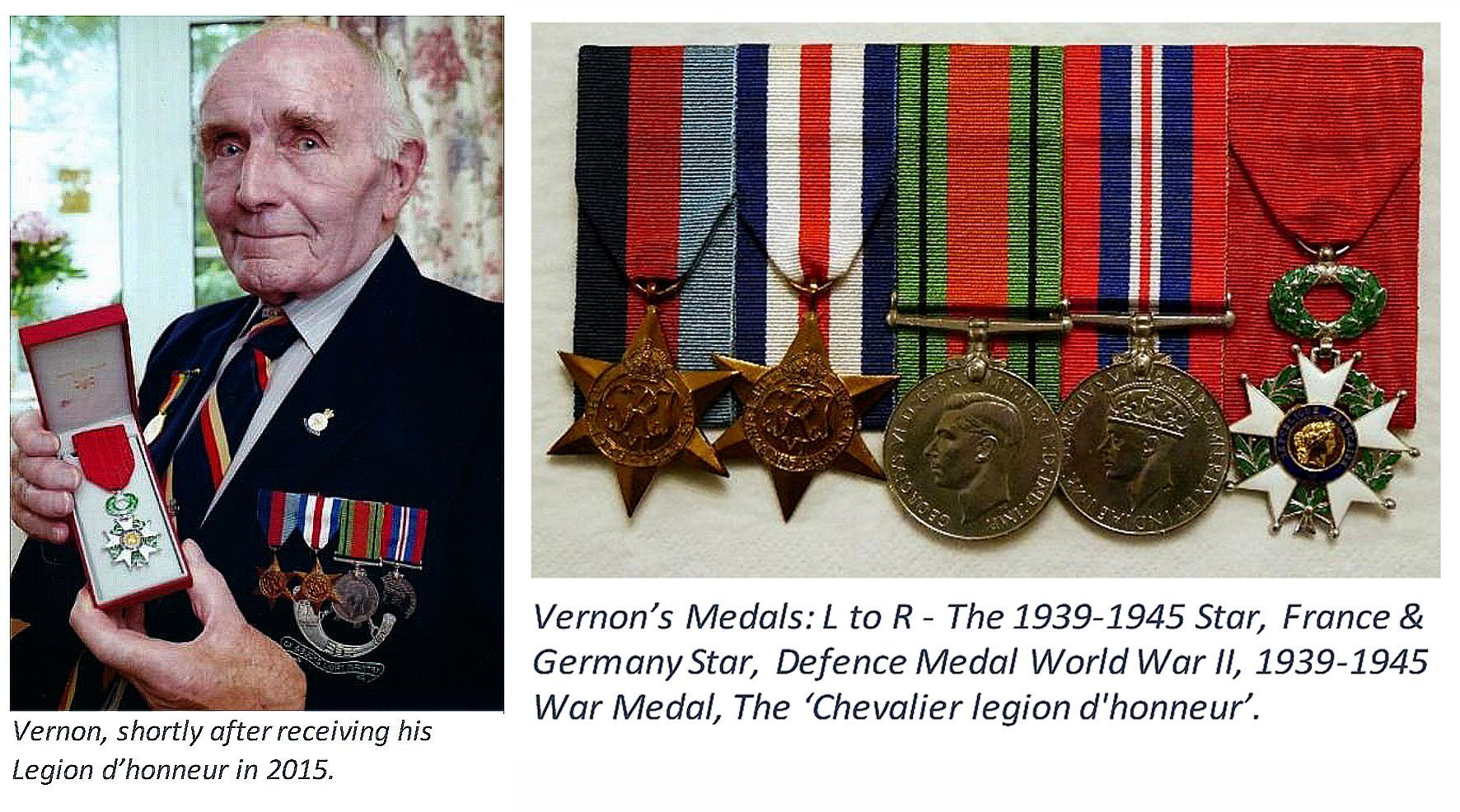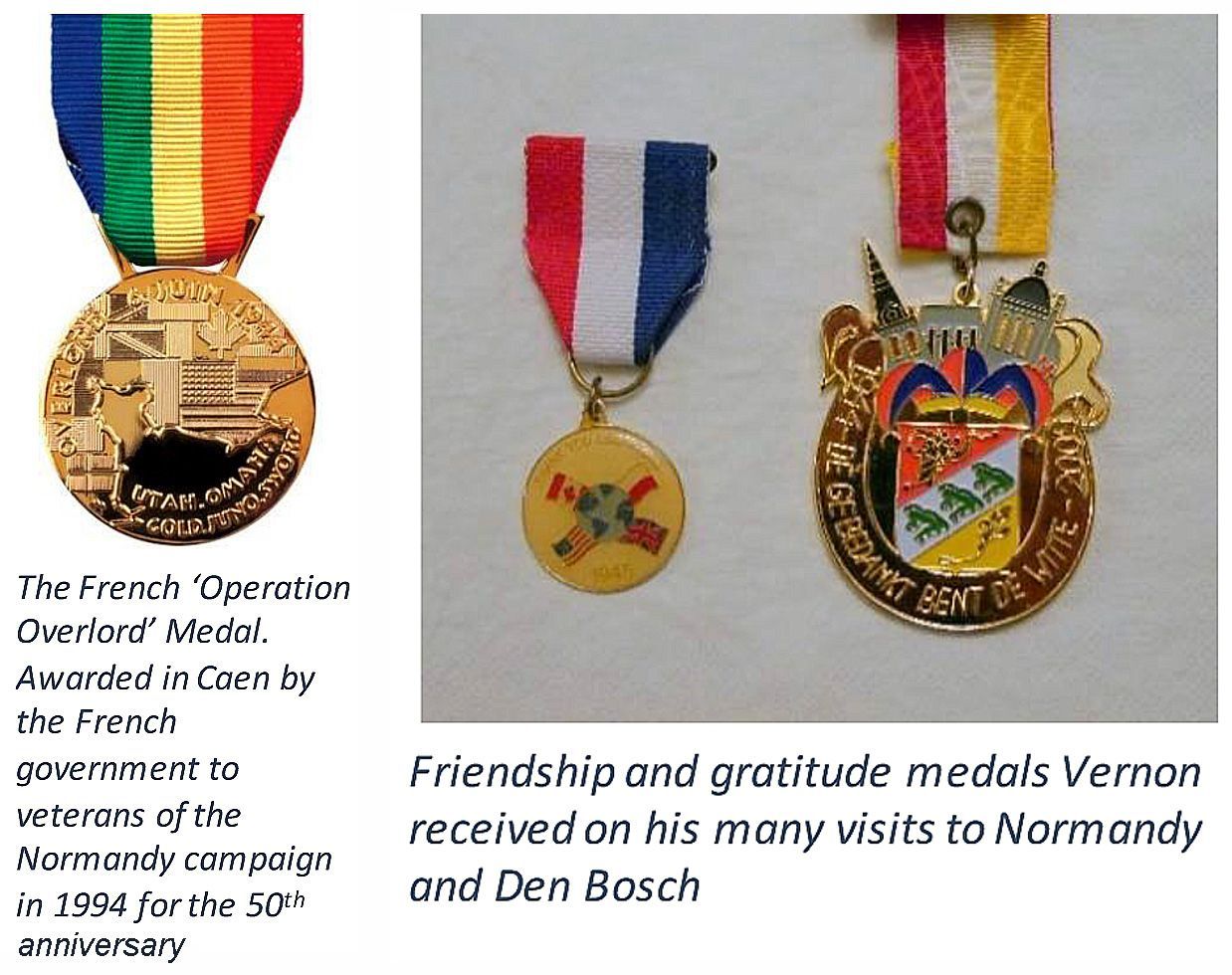Vernon Jones – The story of a D-Day Veteran
Chapter one: Our Man On Gold Beach
On August 23rd, 1943 the 2nd Herts battalion moved to Scotland to the Combined Operations Training Centres at Dundonald, Gailes and Inverary to become the infantry element of the No. 9 Beach Group. It spent the next three months building the sub-units of the Beach Group into a cohesive, well-trained, unit. It did exercises in January 1944 at Gullane in the Firth of Forth.
Here, the remarkable resemblance to the beaches of Normandy made them ideal practice for Beach Groups in the rapid unloading of stores on to beaches, day and night, and in all weathers. In March 1944, No. 9 Beach Group was designated to support the 69th Infantry Brigade, part of the 50th (Northumbrian) Infantry Division and moved to Studland Bay, Bournemouth area and Hayling Island on the south coast, for further rehearsals of its role. It concentrated at Winchester in May ‘44 and broke down into transit camps in and around Southampton.
Private Jones was now part of the infantry element of No 9 Beach Group tasked with defending a two sector perimeter on ‘Gold’ Beach and establishing communications at ‘King Green’ and ‘King Red’ sectors. This would allow two Brigades of the 50th Northumbrian Division (151st & 69th Brigade) time to land with their equipment and armoured support. Gold was the codename for the centre beach of the invasion area. It is 8km long and located between the coastal towns of La Rivière in the east and, on the western end, the small port of Arromanches. Slightly west of that port was the town of Longues-sur-Mer. The German defences were massed on 4 | P a g e both extremities of the beach. Crew-served weapons in this sector were mainly 50mm guns in concrete emplacement and 75mm guns inside pillboxes. To the rear are several artillery batteries covering the beach (Mont-Fleury, Ryes, Marefontaine, Creully, Crepon). The main enemy defences at ‘King’ sector were the fortified positions at la Rivière on the left flank and on higher ground near Mont Fleury and round the lighthouse; there was also a strong-point at Hable de Heurtot where a by-road from Ver-sur-Mer reaches the coast.
For almost six weeks following D-Day, Vernon stayed in the town of La Rivière and at the beach unloading stores until July 14th, when the group moved one and a half miles inland to Ver-sur-Mer.
It was during this time in Normandy that an extraordinary thing happened. While passing a group of injured British soldiers being stretchered to an awaiting boat, Vernon suddenly heard “Hey Taff”. Startled, Vernon looked down at the wounded man to see his old mate from Drayton, Len ‘Bubbles’ Miles. Len had been shot by a sniper on 16th June while on patrol in the sheltered lanes of Normandy. The bullet had passed right through his back, just missing his spine. Bubbles was on his way back to England and a bed at Stoke Mandeville hospital. Of all the thousands of men in Northern France at that time, how amazing that Vernon should bump into someone from his home village in Berkshire.
No 9 Beach Group were eventually expected to move into the front line in their entirety but instead, were disbanded with men distributed piecemeal to various other units as casualty replacements. Perhaps it was appropriate that in August ’44, Vernon should be reallocated to his original Regiment - 1st Battalion (43rd) The Oxfordshire and Buckinghamshire, Light Infantry (Anti-Tank Company), now part of the 71st Infantry Brigade, 53rd (Welsh) Division. Following on from his Normandy operations Vernon began the next chapter of his war-time experiences – which, incredibly, would turn out to be even more challenging!
For a fuller account of Gold Beach - click here
Chapter two: The Big Push through Belgium and Holland
Vernon arrived with the 1st Ox & Bucks soon after leaving the Normandy beach to see the vast devastation inflicted on the enemy at the Falaise Gap. This gave the impression that the war was nearly over but in actual fact, the opposition became stronger as the majority of German forces trapped in the Falaise Pocket escaped through the Gap to fight again and prolong the war. Vernon served with the Anti-Tank Platoon of 'S' Company. As a gunner of a 6-pounder Anti-Tank gun he was involved in several major battles in France and Belgium, like the Battle of Antwerp. Vernon remembered being on the frontline on the southern bank of the Albert Canal. The German line was on the northern bank of the canal. There was a lot of shelling back and forth, and a lot of the German artillery pieces, ammunition and other supplies were brought in by horse drawn carts. Vernon felt especially sorry for the horses who were often killed by the allied shelling of German positions. The sight of dead horses was something that stayed with Vernon all his life. As a young boy growing up in a rural setting, he loved all animals. Vernon’s widow, Hilda, recalled how upset Vernon became when he remembered witnessing the starving people of occupied villages having been forced to cut strips of meat from the flanks of dead horses, as they literally had nothing else to eat.
Through several Flemish towns and villages the 53rd crossed the Belgian-Dutch border, where they even fought against parts of the German 6th Fallschirmjäger Division who were well dug in and fought fiercely. The regiment was ordered to move up the infamous corridor, which had been taken only a few weeks earlier during the fateful Operation Market Garden. Here they relieved the Durham Light Infantry Regiment in the area in between Nijmegen and Arnhem, the Betuwe, also known by the Allied troops as "The lsland." Eventually after a long period of fighting with little rest, they reached the little village of Herpen in the late evening on the 18th of October. Here the regiment enjoyed entertainments, some took a bath and many stories were told. Private Jones was given a nice clean new uniform to wear. However, this period of rest was short-lived, as they were ordered to get ready for the attack on 's-Hertogenbosch the next day. In modern day terms, the Dutch town is more commonly known as Den Bosch. While modern Den Bosch is a prosperous place, in 1944 the town had been occupied by the Germans for four-and-a-half years. As the capital of the North Brabant Province, The 53rd were given the job of liberating the strategically important town.
Chapter three: Another Brush with Death
The Allies continued to force their way towards the German border and on 8th February 1945, the 1st Oxon & Bucks as part of the 53rd took part in the massive five division Anglo Canadian assault on the Reichswald Forest into Germany – Operation Veritable.
The Allied artillery barrage that commenced the move forward was second only in intensity to the combined land, air and sea barrage that introduced the Normandy landings.
The operation began on the 8th of February 1945, the advance was slow, as the Germans were dug in well, and the terrain was very wet. As it had rained for over three days before the start of Operation Veritable, Private Jones remembered being pinned down for many days in their positions, sometimes they had to drink water out of big shell holes.
Shortly after his homecoming he got a job at the Atomic Energy Research Establishment (AERE) at Harwell - he trained as a steam fitter and spent the rest of his working life at the facility. He met his future wife Hilda Prior in The Kings Arms pub in Steventon and they were married at St Michael and All Angels Church in the village in September 1954. Vernon lived out the rest of his life, with Hilda, in a bungalow in the Hanney Road - a bungalow that he built himself, with the help of a few friends.
For many years, in their later life, Vernon and Hilda made the journey over to The Netherlands to take part in services of remembrance at the Cathedral of Den Bosch where Vernon was treated like a celebrity for the part he played in the liberation of the City. He made many Dutch and German friends on his visits and he would always remember to stop off at Ver-Ser-Mer and pay tribute to his friends and fellow soldiers that lost their lives in Normandy. Mr Jones received the Legion d’honneur - highest French military accolade - from the French Government in October 2015, more than 71 years after his heroics on June 6, 1944. In March the following year, he was joined by seven other local veterans at the Town Hall in Oxford to be officially recognised by French Honorary Consul, Robert Mille, who thanked him on behalf of France.
Vernon died following a heart attack on Easter Sunday, (1st April) 2018 at the age of 94, and is survived by his wife Hilda, his sister Norma and his brother Bryn. His funeral took place at St Michael and All Angels Church, Steventon on April 17 2018 and included a guard of honour by his comrades of the Oxon and Bucks Regiment.
Compiled by Steve Lucas for the Steventon History Society – June 2024.
